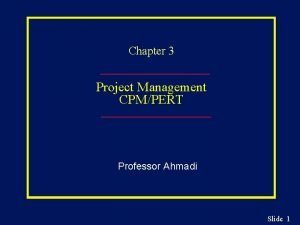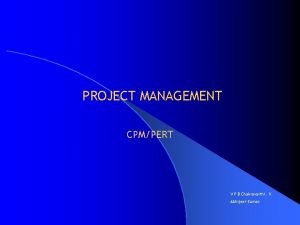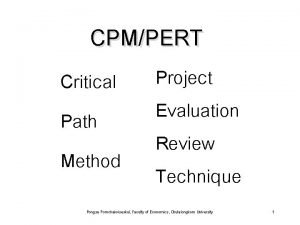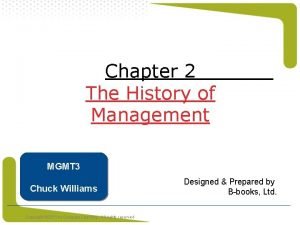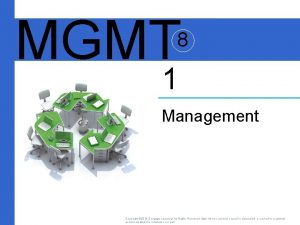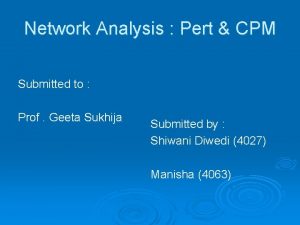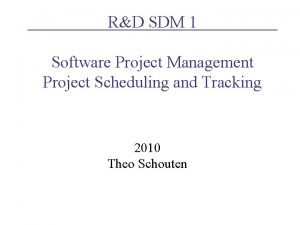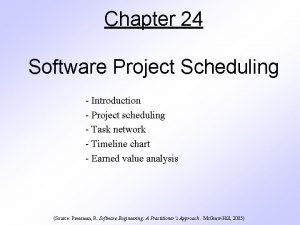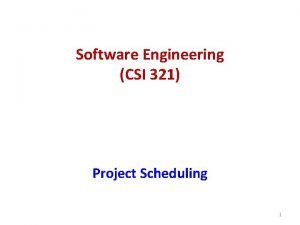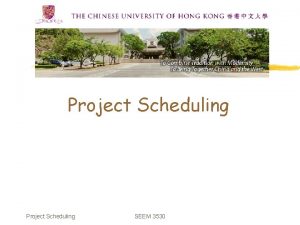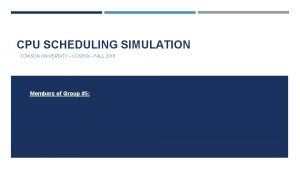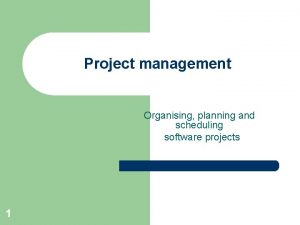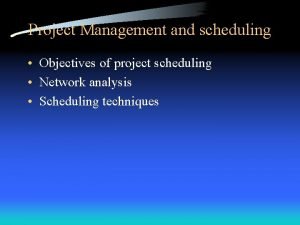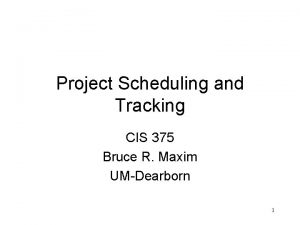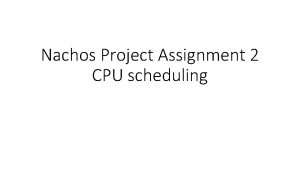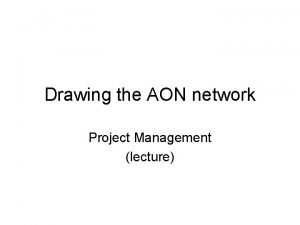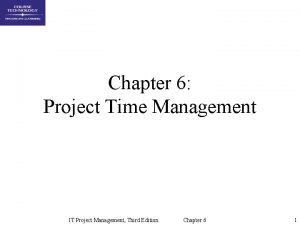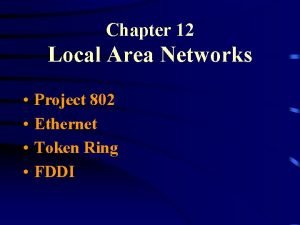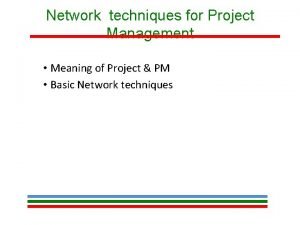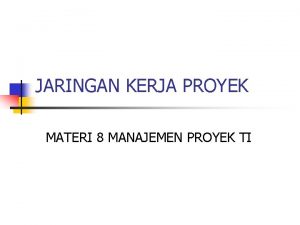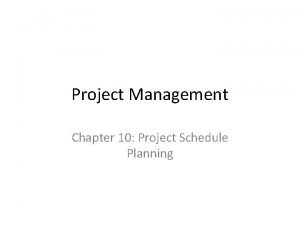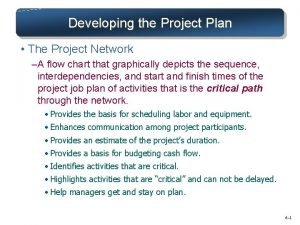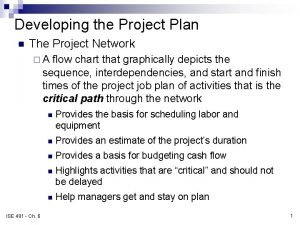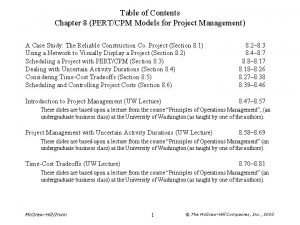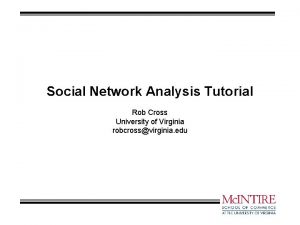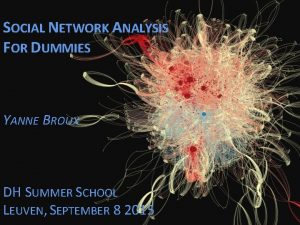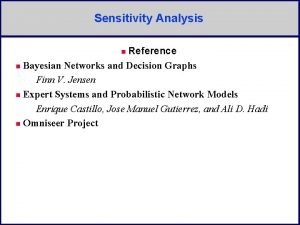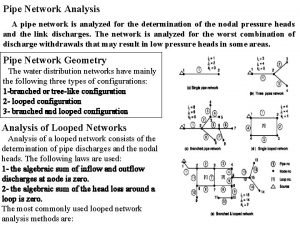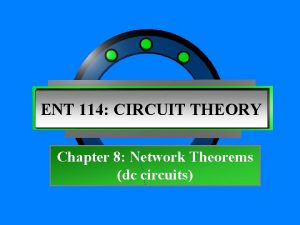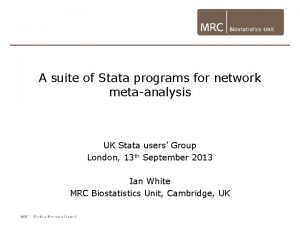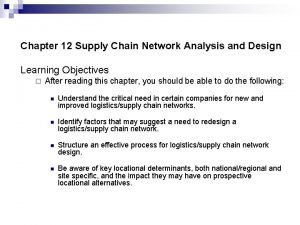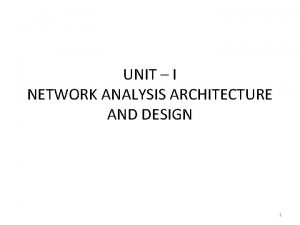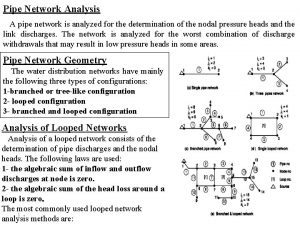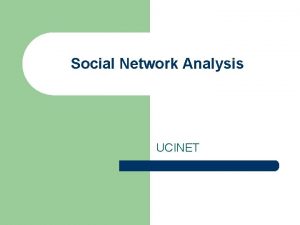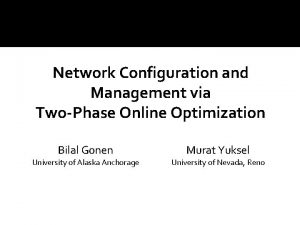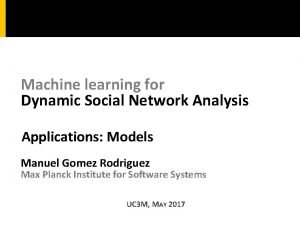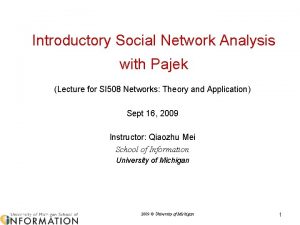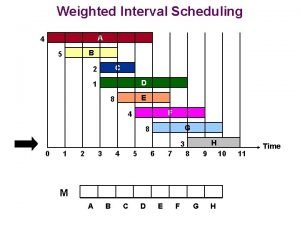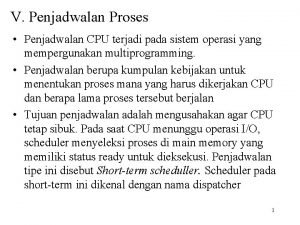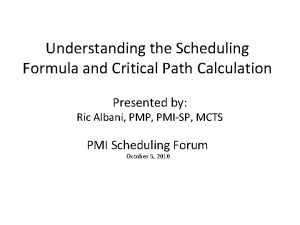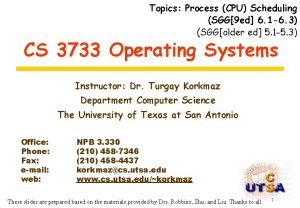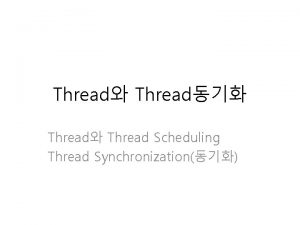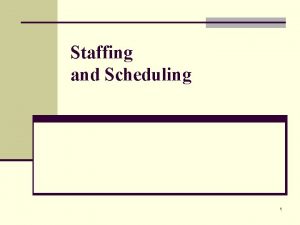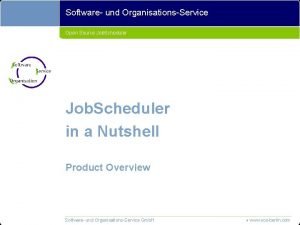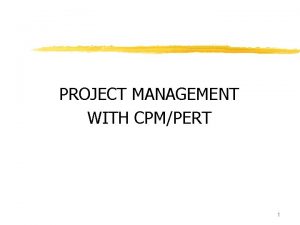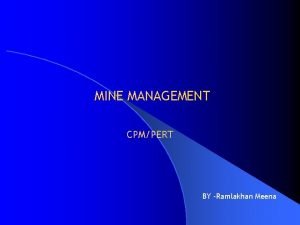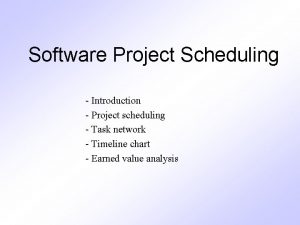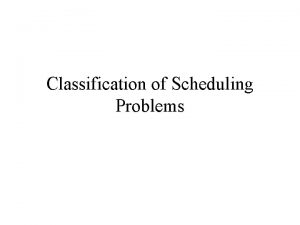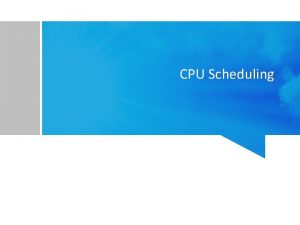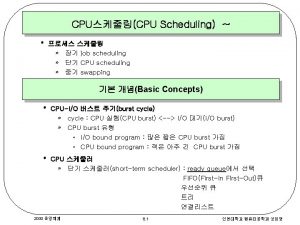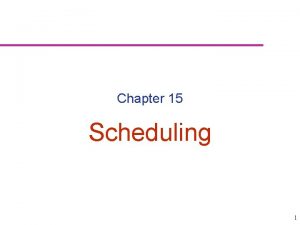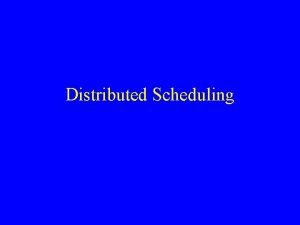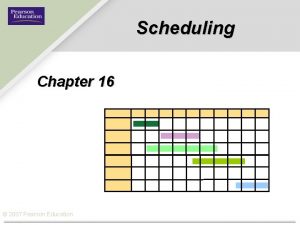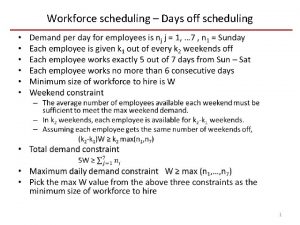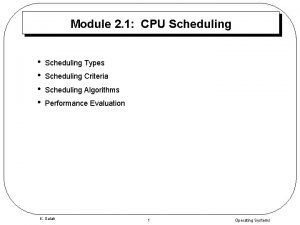Network Analysis CPMPERT Project Mgmt Scheduling G N





























![Network with ES & EF time D[5, 8] 3 2 5 A[ 0 , Network with ES & EF time D[5, 8] 3 2 5 A[ 0 ,](https://slidetodoc.com/presentation_image_h2/89509011cb6a13bc013d49d4afc951ae/image-30.jpg)


![Network with LS & LF time A[ 5[ 0, 5] B[0 6[6 , 6] Network with LS & LF time A[ 5[ 0, 5] B[0 6[6 , 6]](https://slidetodoc.com/presentation_image_h2/89509011cb6a13bc013d49d4afc951ae/image-33.jpg)
























































- Slides: 89

Network Analysis – CPM/PERT Project Mgmt. /Scheduling G. N. Kotwal

Project Management Applications • What is a project? – – Any unique endeavor with specific objectives With multiple activities With defined precedent relationships With a specific time period for completion • Examples? – A major event like a wedding – Any construction project – Designing a political campaign © Wiley 2010

Project Life Cycle • Conception: identify the need • Feasibility analysis or study: costs benefits, and risks • Planning: who, how long, what to do? • Execution: doing the project • Termination: ending the project © Wiley 2010

Scheduling • Schedule converts action plan into operating time table • Basis for monitoring and controlling project • Scheduling more important in projects than in production, because unique nature • Sometimes customer specified/approved requirement-e. g: Building a new factory / Apartment • Based on Work Breakdown Structure (WBS) Unit 4 4

Network Planning Techniques • Program Evaluation & Review Technique (PERT): – Developed to manage the Polaris missile project – Many tasks pushed the boundaries of science & engineering (tasks’ duration = probabilistic) • Critical Path Method (CPM): – Developed to coordinate maintenance projects in the chemical industry – A complex undertaking, but individual tasks are routine (tasks’ duration = deterministic) © Wiley 2010

Both PERT and CPM • Graphically display the precedence relationships & sequence of activities • Estimate the project’s duration • Identify critical activities that cannot be delayed without delaying the project • Estimate the amount of slack associated with noncritical activities © Wiley 2010

NETWORK TECHNIQUES PERT CPM -Program Evaluation and Review Technique - developed by the US Navy with Booz Hamilton Lockheed - on the Polaris Missile/Submarine program 1958 Critical Path Method Developed by El Dupont for Chemical Plant Shutdown Project- about same time as PERT üBoth use same calculations, almost similar üMain difference is probabilistic and deterministic in time estimation üGantt Chart also used in scheduling Unit 4 7

NETWORK • Graphical portrayal of activities and event • Shows dependency relationships between tasks/activities in a project • Clearly shows tasks that must precede (precedence) or follow (succeeding) other tasks in a logical manner • Clear representation of plan – a powerful tool for planning and controlling project Unit 4 8

Example of Simple Network –Survey Unit 4 9

Example of Network –More Complex Unit 4 10

Guidelines for network diagram 1. Before an activity can begin, its preceding activities must be completed. 2. Arrows indicate logical precedence. 3. Flow of the diagram is from left to right. 4. Arrows should not intersect. 5. Dangling should be avoided.

DEFINITION OF TERMS IN A NETWORK • Activity : • Event : • Network : any portions of project (tasks) which required by project, uses up resource and consumes time – may involve labor, paper work, contractual negotiations, machinery operations Activity on Arrow (AOA) showed as arrow (We Use This Method) , AON – Activity on Node beginning or ending points of one or more activities, instantaneous point in time, also called ‘nodes’ Combination of all project activities and the events SUCCESSOR PRECEEDING ACTIVITY EVENT Unit 4 12

APPRAOCHES FOR NETWORK DIAGRAM ACTIVITY ON ARC / Arrow(AOA): • Uses arcs / Arrows to represent activities and nodes to represent events. • It is Event Oriented. 3 1 6 2 4 5 7 8

DUMMY ACTIVITY AOA approach requires the addition of a Dummy Activity to clarify the precedence relationships between the two activities. It is a zero time activity and consumes no resources. Dummy Activity is used in two situations: 1) When two or more activities start and end at the same nodes 1 3 2

2) When two or more activities share the same precedence activity but not all the precedence are shared. 1 3 5 7 2 4 6

ACTIVITY ON NODE(AON): Uses nodes to represent activities and arcs indicate precedence relationships between them. It is Activity Oriented.

Activity-on-Node (AON): Network Diagrams • Activity-on-Node (AON): – Uses nodes to represent the activity – Uses arrows to represent precedence relationships © Wiley 2007

Emphasis on Logic in Network Construction • Construction of network should be based on logical or technical dependencies among activities • Example - before activity ‘Approve Drawing’ can be started the activity ‘Prepare Drawing’ must be completed • Common error – build network on the basis of time logic (a feeling for proper sequence ) see example below CORRECT WRONG !!! Unit 4 18

Example 1 - A simple network Consider the list of four activities for making a simple product: Activity Description Immediate predecessors A Buy Plastic Body - B Design Component - C Make Component B D Assemble product A, C Immediate predecessors for a particular activity are the activities that, when completed, enable the start of the activity in question. Unit 4 19

Sequence of activities • Can start work on activities A and B anytime, since neither of these activities depends upon the completion of prior activities. • Activity C cannot be started until activity B has been completed • Activity D cannot be started until both activities A and C have been completed. • The graphical representation (next slide) is referred to as the PERT/CPM network Unit 4 20

Network of Four Activities Arcs indicate project activities A 1 3 D 4 C B 2 Nodes correspond to the beginning and ending of activities Unit 4 21

Example 2 Develop the network for a project with following activities and immediate predecessors: Activity A Immediate predecessors - B - C B D A, C E C F C G D, E, F Try to do for the first five (A, B, C, D, E) activities Unit 4 22

Network of first five activities A 1 D 3 4 E B C 5 2 We need to introduce a dummy activity Unit 4 23

Network of Seven Activities A 1 D 3 C G 7 E dummy B 4 5 F 2 6 • Note how the network correctly identifies D, E, and F as the immediate predecessors for activity G. • Dummy activities is used to identify precedence relationships correctly and to eliminate possible confusion of two or more activities having the same starting and ending nodes • Dummy activities have no resources (time, labor, machinery, etc) – purpose is to PRESERVE LOGIC of the network Unit 4 24

EXAMPLES OF THE USE OF DUMMY ACTIVITY Network concurrent activities a a 2 1 2 Dummy 1 b 3 b WRONG!!! RIGHT Activity c not required for e WRONG ! a a b e d 1 e 1 b d c c WRONG !!! 2 RIGHT Unit 4 25

WRONG!!! a b c RIGHT!!! d 1 2 3 e f a b c d 1 2 3 4 e f a precedes d. a and b precede e, b and c precede f (a does not precede f) Unit 4 26

Scheduling with activity time Activity A B C D E F G H I Immediate predecessors A A A E D, F B, C G, H Completion Time (week) 5 6 4 3 1 4 14 12 2 Total …… 51 This information indicates that the total time required to complete activities is 51 weeks. However, we can see from the network that several of the activities can be conducted simultaneously (A and B, for example). Unit 4 27

Earliest start & earliest finish time • We are interested in the longest path through the network, i. e. , the critical path. • Starting at the network’s origin (node 1) and using a starting time of 0, we compute an earliest start (ES) and earliest finish (EF) time for each activity in the network. • The expression EF = ES + t can be used to find the earliest finish time for a given activity. For example, for activity A, ES = 0 and t = 5; thus the earliest finish time for activity A is EF = 0 + 5 = 5 Unit 4 28

Arc with ES & EF time EF = earliest finish time ES = earliest start time Activity 1 5] , 0 [ A 5 2 t = expected activity time Unit 4 29
![Network with ES EF time D5 8 3 2 5 A 0 Network with ES & EF time D[5, 8] 3 2 5 A[ 0 ,](https://slidetodoc.com/presentation_image_h2/89509011cb6a13bc013d49d4afc951ae/image-30.jpg)
Network with ES & EF time D[5, 8] 3 2 5 A[ 0 , 5 ] , 2 H[9 12 1] 0, 2 4 G[1 B[0 , 6 6 ] 4 14 C[5, 9] 4 1 6 F[ 4] E[ 5, 6 ] 1 ] 0 , 1 5 6 , 26] 4 2 [ I 2 7 3 Earliest start time rule: The earliest start time for an activity leaving a particular node is equal to the largest of the earliest finish times for all activities entering the node. e. g. On Nodes 3, 5, 6 Unit 4 30

Activity, duration, ES, EF, LS, LF EF = earliest finish time ES = earliest start time Activity 2 ] 9 , 5 [ C 2] 1 , 8 [ 4 LS = latest start time Unit 4 3 LF = latest finish time 31

Latest start & latest finish time • To find the critical path we need a backward pass calculation. • Starting at the completion point (node 7) and using a latest finish time (LF) of 26 for activity I, we trace back through the network computing a latest start (LS) and latest finish time for each activity • The expression LS = LF – t can be used to calculatest start time for each activity. For example, for activity I, LF = 26 and t = 2, thus the latest start time for activity I is LS = 26 – 2 = 24 Unit 4 32
![Network with LS LF time A 5 0 5 B0 66 6 Network with LS & LF time A[ 5[ 0, 5] B[0 6[6 , 6]](https://slidetodoc.com/presentation_image_h2/89509011cb6a13bc013d49d4afc951ae/image-33.jpg)
Network with LS & LF time A[ 5[ 0, 5] B[0 6[6 , 6] , 12 ] C[5, 9] 4[8, 12] 1 E[ 1[5 5, 6] 4 0] 1 6, 10] [ F 6, 4[ 21] , 9 [ H , 24] 2 1 [ 12 5 0, 2 G[1 ] 4] 10, 24 14[ 2 D[5, 8] 3[7, 10] 6 26] , 4 2 I[ 26] , 4 2 2[ 7 3 Latest finish time rule: The latest finish time for an activity entering a particular node is equal to the smallest of the latest start times for all activities leaving the node. e. g. For Node 2 Unit 4 33

Slack or Free Time or Float Slack is the length of time an activity can be delayed without affecting the completion date for the entire project. For example, slack for C = 3 weeks, i. e Activity C can be delayed up to 3 weeks (start anywhere between weeks 5 and 8). 2 ES 5 LS 8 EF 9 ] 9 , 5 [ C 2] 1 , 8 [ 4 3 EF 12 LF-EF = 12 – 9 =3 LS-ES = 8 – 5 = 3 LF-ES-t = 12 -5 -4 = 3 Unit 4 34

Activity schedule for our example Activity A B C D E F G H I Earliest start (ES) 0 0 5 5 5 6 10 9 24 Latest start (LS) 0 6 8 7 5 6 10 12 24 Earliest finish (EF) Latest finish (LF) 5 6 9 8 6 10 24 21 26 5 12 12 10 6 10 24 24 26 Unit 4 Slack (LS-ES) 0 6 3 2 0 0 0 3 0 Critical path Yes Yes Yes 35

IMPORTANT QUESTIONS • What is the total time to complete the project? – 26 weeks if the individual activities are completed on schedule. • What are the scheduled start and completion times for each activity? – ES, EF, LS, LF are given for each activity. • What activities are critical and must be completed as scheduled in order to keep the project on time? – Critical path activities: A, E, F, G, and I. • How long can non-critical activities be delayed before they cause a delay in the project’s completion time – Slack time available for all activities are given. Unit 4 36

Importance of Float (Slack) and Critical Path 1. Slack or Float shows how much allowance each activity has, i. e how long it can be delayed without affecting completion date of project 2. Critical path is a sequence of activities from start to finish with zero slack. Critical activities are activities on the critical path. 3. Critical path identifies the minimum time to complete project 4. If any activity on the critical path is shortened or extended, project time will be shortened or extended accordingly Unit 4 37

Importance of Float (Slack) and Critical Path (cont) 5. So, a lot of effort should be put in trying to control activities along this path, so that project can meet due date. If any activity is lengthened, be aware that project will not meet deadline and some action needs to be taken. 6. If can spend resources to speed up some activity, do so only for critical activities. 7. Don’t waste resources on non-critical activity, it will not shorten the project time. 8. If resources can be saved by lengthening some activities, do so for noncritical activities, up to limit of float. 9. Total Float belongs to the path Unit 4 38

PERT For Dealing With Uncertainty • So far, we assumed, times can be estimated with relative certainty, confidence • For many situations this is not possible, e. g Research, development, new products and projects etc. • Use 3 time estimates m= most likely time estimate, mode. a = optimistic time estimate, b = pessimistic time estimate, and Expected Value (TE) = (a + 4 m + b) /6 Variance (V) = ( ( b – a) / 6 ) 2 Std Deviation (δ) = SQRT (V) Unit 4 39

Precedences And Project Activity Times Immediate Activity Predecessor Optimistic Most Likely Pessimistic EXP Var S. Dev Time TE V a - 10 22 22 20 4 2 b - 20 20 0 0 c - 4 10 16 10 4 2 d a 2 14 32 15 25 5 e b, c 8 8 20 10 4 2 f b, c 8 14 20 14 4 2 g b, c 4 4 0 0 h c 2 12 16 11 5. 4 2. 32 I g, h 6 16 38 18 28. 4 5. 33 j d, e 2 8 14 8 Unit 4 4 2 40

The complete network 2 a (20, 4) 1 b (20, 0) d (15, 25) e (10, 4) 3 6 j (8, 4) f (14, 4) g (4, 0) c (10, 4) 4 h (11, 5. 4) Unit 4 5 7 i (18, 28. 4) 41

The complete Network EF=20 a (20, 4) 1 b (20, 0) 2 20 35 d (15, 25) e (10, 4) 3 6 j (8, 4) 43 f (14, 4) g (4, 0) c (10, 4) 4 h (11, 5. 4) 5 7 CRIT. TIME = 43 i (18, 28. 4) 24 10 Unit 4 42

Critical Path Analysis (PERT) Activity LS ES Slacks Critical ? a 0 0 0 Yes b 1 0 1 c 4 0 4 d 20 20 0 e 25 20 5 f 29 20 9 g 21 20 1 h 14 10 4 i 25 24 1 j 35 35 0 Unit 4 Yes 43

Using Beta Probability Distribution to Calculate Expected Time Durations • A typical beta distribution is shown below, note that it has definite end points • The expected time for finishing each activity is a weighted average

Assume, PM promised to complete the project in the fifty days. What are the chances of meeting that deadline? Calculate Z, where Z = (D-S) / V Example, D = 50; S(Scheduled date) = 20+15+8 =43; Z = (50 – 43) / 5. 745 = 1. 22 standard deviations. V = (4+25+4) =33 The probability value of Z = 1. 22, is 0. 888 1. 22 Unit 4 45

What deadline are you 95% sure of meeting Z value associated with 0. 95 is 1. 645 D = S + 5. 745 (1. 645) = 43 + 9. 45 = 52. 45 days Thus, there is a 95 percent chance of finishing the project by 52. 45 days. Unit 4 46

Reducing Project Completion Time • Project completion times may need to be shortened because: – Different deadlines – Penalty clauses – Need to put resources on a new project – Promised completion dates • Reduced project completion time is “crashing” © Wiley 2010

Reducing Project Completion Time – con’t • Crashing a project needs to balance – Shorten a project duration – Cost to shorten the project duration • Crashing a project requires you to know – Crash time of each activity – Crash cost of each activity Crash cost/duration = (crash cost-normal cost)/(normal time – crash time) © Wiley 2010

Reducing the Time of a Project (crashing) Activity Normal Time (wk) Normal Cost ($) Crash Time Crash Cost ($) Max. weeks Reduce cost of reduction per week A 4 8, 000 3 11, 000 1 3, 000 B 6 30, 000 5 35, 000 1 5, 000 C 3 6, 000 0 0 D 6 24, 000 4 28, 000 2 2, 000 E 14 60, 000 12 72, 000 2 6, 000 F 5 5, 000 4 6, 500 1 1500 G 2 6, 000 0 0 H 2 4, 000 0 0 I 3 4, 000 2 5, 000 1 1, 000 J 4 4, 000 2 6, 400 2 1, 200 K 2 5, 000 2© Wiley 20075, 000 0 0

Crashing Example: Suppose the Cables By Us project manager wants to reduce the new product project from 41 to 36 weeks. • Crashing Costs are considered to be linear • Look to crash activities on the critical path • Crash the least expensive activities on the critical path first (based on cost per week) – – Crash activity I from 3 weeks to 2 weeks $1000 Crash activity J from 4 weeks to 2 weeks $2400 Crash activity D from 6 weeks to 4 weeks $4000 Recommend Crash Cost $7400 • Question: Will crashing 5 weeks return more in benefits than it costs? © Wiley 2010

Comparison Between CPM and PERT 1 CPM PERT Uses network, calculate float or slack, identify critical path and activities, guides to monitor and controlling project Same as CPM 2 Uses one value of activity time Requires 3 estimates of activity time Calculates mean and variance of time 3 Used where times can be estimated with confidence, familiar activities Used where times cannot be estimated with confidence. Unfamiliar or new activities 4 Minimizing cost is more important Meeting time target or estimating percent completion is more important 5 Example: construction projects, building one off machines, ships, etc Example: Involving new activities or products, research and development etc Unit 4 51

BENEFITS OF CPM / PERT NETWORK Consistent framework for planning, scheduling, monitoring, and controlling project. • Shows interdependence of all tasks, work packages, and work units. • Helps proper communications between departments and functions. • Determines expected project completion date. • Identifies so-called critical activities, which can delay the project completion time. Unit 4 52

BENEFITS OFCPM / PERT NETWORK (cont. ) • Identified activities with slacks that can be delayed for specified periods without penalty, or from which resources may be temporarily borrowed • Determines the dates on which tasks may be started or must be started if the project is to stay in schedule. • Shows which tasks must be coordinated to avoid resource or timing conflicts. • Shows which tasks may run in parallel to meet project completion date Unit 4 53

Gantt Charts • Since 1917; Useful for showing work vs time in form of bar charts e. g. • Can draw directly or from CPM/PERT network Unit 4 54

Modified PERT/CPM diagram from network a d 1 6 2 7 Legend e [ Scheduled Start ] Scheduled Finish - Actual Progress Ä Unavailable L Current Date à Milestone Scheduled ¨ Milestone Achieved 3 f 3 b 1 1 c 4 3 5 15 20 dummy h 4 0 5 10 25 Unit 4 30 Days 35 40 45 55

Unit 4 56

Unit 4 58

Gantt Charts and CPM/PERT Networks Gantt Charts: • Even though a lot of info, easy to read and , understand to monitor and follow progress. • Not very good for logical constraints • Should be used to COMPLEMENT networks, not replace Unit 4 59

RESOURCE ANALYSIS AND SCHEDULING § Ability to carry out projects depend on the availability of resources §Analyze resource implication -How requirements can be met and changes needed §Use resources efficiently §Use network to give information about time, resources and cost Unit 4 60

Activities D, E, F, G and H require fitters. Construct a bar chart with activities at their EST indicating person required and total float. Activity 222222 22 2222 4 4 44 44444 Time Add up across all activities to get the total number of men required. Unit 4 61

Convert the bar chart to a histogram Resource analysis before scheduling Shows: i) Variation from week to week (fitters) ii) Maximum number of person required (12) during week 5 -6 Examine resource implication. Unit 4 62

Example If only 8 fitters are available at any period during the projects: New bar chart: Activity 222222 22 2222 4 4 44 44444 Time Unit 4 63

Additional Restriction – no fitters available until the end of week 5. Revised Schedule: Activity 222222 22 2222 4 4 44 44444 Time Unit 4 64

Resource constraints relates to: 1. Variations in resource requirements 2. Resource availability Smaller variations: 1. Easier control of the job 2. Better utilization of resources Big variations: 1. Frequent moving of manpower 2. Require close control 3. Affect efficiency Unit 4 65

Histogram showing large resource variations Unit 4 66

The Critical Chain Approach • The Critical Chain Approach focuses on project due dates rather than on individual activities and the following realities: – Project time estimates are uncertain so we add safety time – Multi-levels of organization may additional time to be “safe” – Individual activity buffers may be wasted on lower-priority activities – A better approach is to place the project safety buffer at the end Original critical path Activity A Activity B Activity C Activity D Activity E Critical path with project buffer Activity A Activity B Activity C Activity D Activity E © Wiley 2010 Project Buffer

Adding Feeder Buffers to Critical Chains • The theory of constraints, the basis for critical chains, focuses on keeping bottlenecks busy. • Time buffers can be put between bottlenecks in the critical path • These feeder buffers protect the critical path from delays in noncritical paths © Wiley 2007

Project Management within OM: How it all fits together • Project management techniques provide a structure for the project manager to track the progress of different activities required to complete the project. • Particular concern is given to critical path (the longest connected path through the project network) activities. • Any delay to a critical path activity affects the project completion time. • These techniques indicate the expected completion time and cost of a project. • The project manager reviews this information to ensure that adequate resources exist and that the expected completion time is reasonable. © Wiley 2010

Project Management OM Across the Organization • Accounting uses project management (PM) information to provide a time line for major expenditures • Marketing use PM information to monitor the progress to provide updates to the customer • Information systems develop and maintain software that supports projects • Operations use PM to information to monitor activity progress both on and off critical path to manage resource requirements © Wiley 2010

Highlights • A project is a unique, one time event of some duration that consumes resources and is designed to achieve an objective in a given time period. • Each project goes through a five-phase life cycle: concept, feasibility study, planning, execution, and termination. • Two network planning techniques are PERT and CPM. Pert uses probabilistic time estimates. CPM uses deterministic time estimates. • Pert and CPM determine the critical path of the project and the estimated completion time. On large projects, software programs are available to identify the critical path. © Wiley 2010

Highlights con’t • Pert uses probabilistic time estimates to determine the probability that a project will be done by a specific time. • To reduce the length of the project (crashing), we need to know the critical path of the project and the cost of reducing individual activity times. Crashing activities that are not on the critical path typically do not reduce project completion time. • The critical chain approach removes excess safety time from individual activities and creates a project buffer at the end of the critical path. © Wiley 2010

More Examples Unit 4 73

Activit Preceden Normal time (week) y ce Normal Cost (Rs) A B C D E F G H I Total 300 30 420 720 250 320 400 780 1000 4220 A A A D B, C, E F F G 3 3 7 9 5 6 4 13 10

7 4 1 5 2 6 3 8

Overhead cost as per the given data- Rs. 50 Paths in the network diagram : A-D-F-G-I = 32 A-D-F-H = 31 A-C-F-H = 29 A-C-F-G-I = 30 A-B-E-F-H = 30 A-B-E-F-G-I = 31

Critical path – A-D-F-G-I = 32 7 4 1 2 6 5 3 8

TIME ESTIMATES o Optimistic time (to) – It is the shortest time in which the activity can be completed. o Most likely time (tm) – It is the probable time required to perform the activity. o Pessimistic time (tp) – It is the longest estimated time required to perform an activity. o Expected time te = to + 4 tm + tp 6

STEPS IN PERT 1. Identify the specific activities. 2. Determine proper sequence of the activities. 3. Construct the network diagram. 4. Estimate the time required for each activity. 5. Determine the critical path. 6. Update the PERT chart.

Activity Descrip Preced tion ence Optimis Most tic time Likely time Pessimi Expecte stic time d time A Initial design - 12 16 26 17 B Survey market A 6 9 18 10 C Build prototype A 8 10 18 11 D Test prototype C 2 3 4 3 E Redesign ing B, D 3 4 11 5 F Market testing E 6 8 10 8 G Set up productio n F 15 20 25 20

1 2 4 5 6 7 3 A-B-E-F-G = 60 A-C-D-E-F-G = 64 (CRITICAL PATH)

Key Terms – Critical Path: The longest time path through the task network. The series of tasks (or even a single task) that dictates the calculated finish date of the project (That is, when the last task in the critical path is completed, the project is completed) The "longest" path (in terms of time) to the completion of a project. If shortened, it would shorten the time it takes to complete the project. Activities off the critical path would not affect completion time even if they were done more quickly. 82

Slack Time The amount of time a task can be delayed before the project finish date is delayed. Total slack can be positive or negative. If total slack is a positive it indicates the amount of time that the task can be delayed without delaying the project finish date. If negative, it indicates the amount of time that must be saved so that the project finish date is not delayed. Total Slack = Latest Start - Earliest Start. By default and by definition, a task with 0 slack is considered a critical task. If a critical task is delayed, the project finish date is also delayed. (Also known as float time) 83

Crashing Shifting resources to reduce slack time so the critical path is as short as possible. Always raises project costs and is typically disruptive – a project should be crashed with caution. 84

• Gantt Chart: A bar chart. While visually appealing on a task/duration basis, it is limited because it does not show task or resource relationships well. Strength: easy to maintain and read. • Network Diagram: A wire diagram, Also known as a PERT network diagram. A diagram that shows tasks and their relationships. Limited because it shows only task relationships. Strength: easy to read task relationships. 85

Sample Gantt Chart 86

Dependencies Links between project tasks. There are 3 types of dependencies: – Causal, where 1 task must be completed before another can begin (have to bake bread before you can make a sandwich) » critical path schedules are based only on causal dependencies – Resource, where a task is limited by availability of resources (more bread can be baked by 2 bakers, but only 1 is available) – Discretionary, optional task sequence preferences that, though not required, may reflect organizational preferences 87

Dummy activity An imaginary activity with no duration, used to show either an indirect relationship between 2 tasks or to clarify the identities of the tasks. In CPM, each activity must be uniquely defined by its beginning and ending point. When two activities begin and end at the same time, a dummy activity (an activity which begins and ends at the same time) is inserted into the model to distinguish the two activities. 88

Milestone A significant task which represents a key accomplishment within the project. Typically requires special attention and control. 89

Unit 4 90
 Cpmpert
Cpmpert Cpmpert
Cpmpert Cpmpert
Cpmpert Cpmpert
Cpmpert Tim washington portfolio management
Tim washington portfolio management Job scheduling vs process scheduling
Job scheduling vs process scheduling Infrastructure mgmt
Infrastructure mgmt Chapter 2 history of management
Chapter 2 history of management Mgmt 4
Mgmt 4 Mgmt 371
Mgmt 371 Mgmt+8
Mgmt+8 Mgmt 371
Mgmt 371 Keller graduate school of mgmt
Keller graduate school of mgmt Mgmt 341
Mgmt 341 Mgmt 371 final exam
Mgmt 371 final exam Mgmt 650 quiz 4
Mgmt 650 quiz 4 Mgmt 650
Mgmt 650 Mgmt ama
Mgmt ama Mgmt ama
Mgmt ama Mgmt 310 purdue
Mgmt 310 purdue Advantages of pert
Advantages of pert Project scheduling in software engineering
Project scheduling in software engineering Basic principles of project scheduling
Basic principles of project scheduling What is project scheduling in software engineering
What is project scheduling in software engineering Identify critical path
Identify critical path Compartmentalization interdependency effort validation r
Compartmentalization interdependency effort validation r Cpu scheduling project
Cpu scheduling project What is a project schedule
What is a project schedule Objectives of scheduling
Objectives of scheduling Project scheduling and tracking software quality assurance
Project scheduling and tracking software quality assurance Cpu scheduling project
Cpu scheduling project Virtual circuit network and datagram network
Virtual circuit network and datagram network Types of network topology
Types of network topology Features of peer to peer network and client server network
Features of peer to peer network and client server network Network systems design using network processors
Network systems design using network processors Network centric computing
Network centric computing Packet switching vs circuit switching
Packet switching vs circuit switching What is aon network
What is aon network Pert formula
Pert formula 802*12
802*12 Network technique
Network technique Proyek jaringan komputer
Proyek jaringan komputer Network diagram for wedding project
Network diagram for wedding project Aoa network diagram
Aoa network diagram Network project plan
Network project plan Constructing a project network
Constructing a project network Koll business center
Koll business center Project 10
Project 10 Mail network optimization project
Mail network optimization project Reliable construction company
Reliable construction company Agile project leadership network
Agile project leadership network The role of project management in achieving project success
The role of project management in achieving project success Background of the project example
Background of the project example Modern process transitions in spm
Modern process transitions in spm Project cost duration graph
Project cost duration graph Introduction to project management kathy schwalbe
Introduction to project management kathy schwalbe Software project evaluation
Software project evaluation Traditional vs modern project management
Traditional vs modern project management Perpetual project closure
Perpetual project closure Integrating metrics within the software process
Integrating metrics within the software process Agile ms project template
Agile ms project template Example of methodology
Example of methodology Type n terminations
Type n terminations Social network analysis tutorial
Social network analysis tutorial Social network analysis for dummies
Social network analysis for dummies Sensitivity analysis bayesian network
Sensitivity analysis bayesian network Pipe network analysis
Pipe network analysis Dc circuit analysis and network theorem
Dc circuit analysis and network theorem Bibliometric network analysis
Bibliometric network analysis Stata network analysis
Stata network analysis Susan o shea
Susan o shea Spatial design network analysis
Spatial design network analysis Personal network analysis
Personal network analysis Supply chain network analysis
Supply chain network analysis Network analysis architecture and design
Network analysis architecture and design Fast track engineer microsoft
Fast track engineer microsoft Pipe network analysis
Pipe network analysis Ucinet network analysis
Ucinet network analysis Network configuration optimization analysis
Network configuration optimization analysis Machine learning social network analysis
Machine learning social network analysis Pajek download
Pajek download Network graph in excel
Network graph in excel Soil climate analysis network
Soil climate analysis network Weighted interval scheduling
Weighted interval scheduling Time sharing
Time sharing Scheduling formula
Scheduling formula Difference between preemptive and nonpreemptive scheduling
Difference between preemptive and nonpreemptive scheduling Thread scheduling
Thread scheduling Staffing and scheduling in nursing
Staffing and scheduling in nursing Job scheduler open source linux
Job scheduler open source linux
